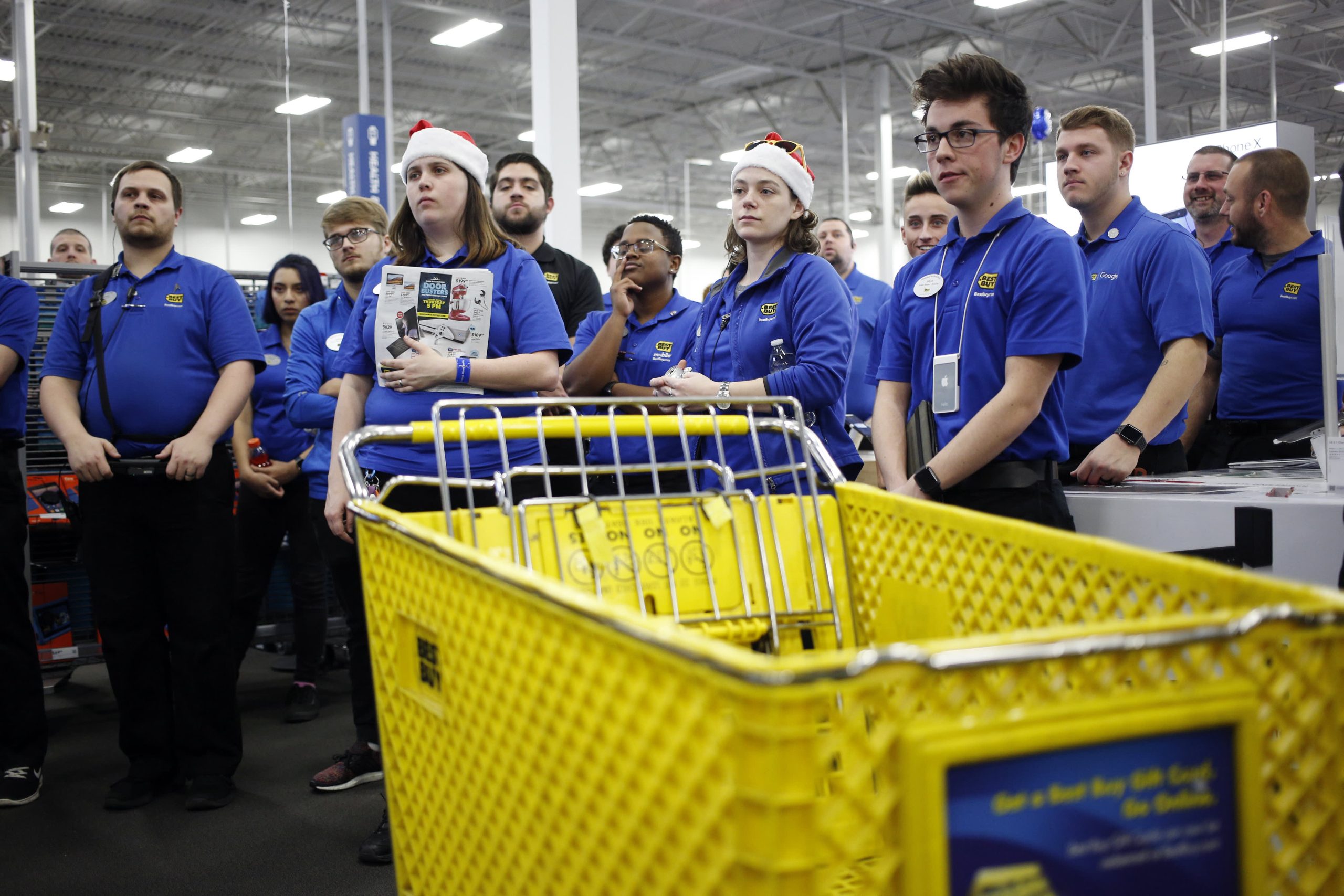On Thursday, Best Buy exceeded Wall Street’s expectations for revenue and earnings for the holiday quarter, despite going through a period of muted consumer electronics demand.
The retailer, however, cautioned that it anticipates another year of subdued sales. To address this, Best Buy plans to lay off employees and reduce other costs across the business.
CEO Corie Barry provided limited details but emphasized the need to align the company’s workforce and store operations with evolving customer shopping behaviors.
The cost savings will be reinvested into the business, particularly in new areas such as artificial intelligence, Barry noted.
“This will give us the opportunity to reinvest in our future and ensure that we are well-positioned for the industry’s eventual recovery,” she said during a call with reporters.
For the upcoming fiscal year, Best Buy forecasts revenue between $41.3 billion and $42.6 billion, a decrease from the $43.45 billion recorded for the most recent fiscal year. The company also expects comparable sales to remain flat or decline by up to 3%.
The retailer plans to close 10 to 15 stores this year, following the closure of 24 stores in the previous fiscal year.
One factor impacting sales this year is the shorter calendar. Best Buy noted that the additional week in the past fiscal year contributed approximately $735 million to revenue and added about 30 cents to diluted earnings per share.
Best Buy’s shares closed more than 1% higher on Thursday, briefly reaching a 52-week high of $86.11 earlier in the day.
Best Buy has experienced slower demand, partly due to its strong sales during the pandemic, when increased home-bound activities led to higher spending.
Items like laptops, refrigerators, and home theater systems are generally high-cost and infrequent purchases.
Additionally, shoppers have become more selective with large purchases amid inflation-driven increases in food prices and other expenses. Moreover, spending has returned to a balance between services and goods after the pandemic.
Despite these challenges, Best Buy’s holiday quarter performance was better than feared. For the three-month period ending February 3, the company’s net income decreased by 7% to $460 million, or $2.12 per share, compared to $495 million, or $2.23 per share, in the previous year. Revenue fell from $14.74 billion a year earlier.
Comparable sales, which include online and store sales from locations open for at least 14 months, decreased by 4.8% during the quarter, with fewer purchases of appliances, mobile phones, tablets, and home theater systems compared to the previous year. However, gaming emerged as a strong sales category for the holiday season.
In the U.S., Best Buy’s comparable sales declined by 5.1%, and its online sales fell by 4.8%. During the quarter, traditional holiday shopping periods were the strongest for Best Buy.

CFO Matt Bilunas noted that comparable sales were down 5% year-over-year in November but only fell 2% in December, around the holiday gift-giving season. January was the weakest month, with comparable sales dropping 12%.
Barry indicated that customers were very deal-focused during the holiday season. Sales on traditionally discount-heavy days like Black Friday and the week of Cyber Monday met expectations, although December’s sales lull was worse than anticipated. Demand exceeded the company’s expectations in the four days leading up to Christmas.
On the earnings call, Barry projected that the coming year would see “increasing industry sales stabilization.”
She emphasized that the company is focused on improving customer experiences and industry positioning, with expectations of an improved operating income rate in the coming year.
Revenue from services, including fees from its annual membership program, in-home installations, and repairs, has helped offset weaker demand for new products.
This sector is expected to continue growing, with gains partly attributed to the My Best Buy membership program, which offers three tiers of benefits ranging from free to $179.99 per year.
The removal of home installations from the program’s perks has led to more customers opting to pay separately for this service, according to Barry.
As of the end of the fiscal year, My Best Buy had 7 million paid members, who tend to spend more at Best Buy compared to non-members.
Barry also highlighted that Best Buy’s services would help the retailer stand out, especially as artificial intelligence becomes more integrated into devices.
The retailer has been awaiting a customer upgrade cycle following the pandemic-driven surge in electronics purchases.
Barry mentioned early signs of this cycle beginning, including positive year-over-year comparable sales for laptops in the fiscal fourth quarter and into the first quarter.
Other positive indicators include easing inflation and “green shoots” in the housing market. Although Best Buy’s sales are not directly tied to the housing market, which has seen slower turnover, home purchases often drive appliance and TV purchases.
During the period, Best Buy paid out $198 million in dividends and spent $70 million on share buybacks. On Thursday, the company announced a 2% increase in its regular quarterly dividend to 94 cents per share, payable in April.
As of Thursday’s close, Best Buy’s stock has risen approximately 3% year-to-date, though it has lagged behind the S&P 500’s approximate 7% gain during the same period. Best Buy’s market value stands at about $17.4 billion.







Leave a Reply